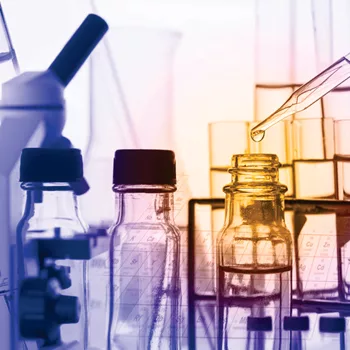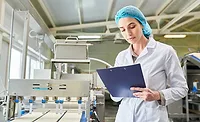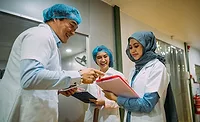Food Safety Testing: What Are Your Options?

According to a recent study by MarketsandMarkets Research,[1] the global food safety testing market size was over $12.01 billion in 2016 and is projected to reach $18.41 billion by 2022. This growth magnifies the need for fast, accurate analytical test results—and demand has never been greater. Increased consumer interest in food safety and quality issues, and the capability to rapidly share these issues through social media, combined with expanding regulatory initiatives such as the Food Safety Modernization Act (FSMA), are increasing the importance of testing. Many food and feed manufacturers are reevaluating their options for how to conduct this critical testing as efficiently as possible. One option that is nearly always considered is setting up an in-house lab. Below are some topics to consider if you are contemplating an in-house lab.
Physical Space
When looking to set up an in-house lab, remember that planning the physical layout of the space is crucial. Specialized air-handling systems, filters and maintenance programs to prevent contamination from spreading throughout the lab and into the production environment should be included in a mandatory conversation. Keeping functions segregated, implementing shoe/uniform changing facilities and procedures, and investing in special utilities such as power, steam or treated water are all options to consider when thinking about the best way to set up an efficient in-house lab. Design is also a critical factor for your in-house facility. The flow of samples, storage of supplies and staffing of employees should all be considered in advance to minimize potential risk. For example, individual work departments could include the concept of mobile workstations, which would allow for the growth and modification of future workflows and permit easier cleaning in the area. Another example is flooring. The type of flooring for any lab is a key consideration and often overlooked. Seams, cracking and resistance to chemicals used for cleaning will all need to be taken into account when you are designing an in-house lab.
Specialized Equipment
Equipment for chemistry, such as complex chromatography systems, has always been expensive. A single system such as a liquid chromatograph-tandem mass spectrometry system can cost hundreds of thousands of dollars. And that is just the upfront cost. Maintenance on these systems can cost tens of thousands of dollars per year. Equipment used for microbiology is also getting more expensive. While pipettes and Petri dishes are relatively cheap, automated pathogen detection and subtyping systems can climb into the six-digit range. Try to plan out your 3- and 5-year testing strategies before you invest in equipment and start preparing the physical layout of your lab.
Staffing
Finding and retaining good employees will be another crucial step and consideration in building out your in-house lab. In addition to finding the right people to run your lab, you will want to find experts who have their fingers on the pulse of the industry—and then keep them! Ongoing training requirements and covering absences will be something to work on with your human resources department in advance. Also, keep in mind that despite how experienced a person is when first hired, extensive training is typically required before an employee can conduct any testing.
ISO Accreditation
In the U.S., the regulations do not yet require ISO accreditation for most testing. However, more and more scrutiny is being placed on how critical testing is conducted. Having ISO 17025 accreditation is becoming a normal expectation. Attaining this accreditation can be a very labor-intensive and costly endeavor for any in-house lab. Producing the systems and documentation required for ISO accreditation can take hundreds of person-hours to accomplish.
The ISO 17025 standard was last published over 10 years ago, and the requirements are now evolving. In fact, a new draft revision of the ISO 17025 standard is expected to be published by the end of the year. The draft revision is expected to encompass several changes related to management, structure and documentation requirements. Some of the proposed changes would impose an increased emphasis on processes and risk management.
The revised standard has been described as closely aligned with the general principles of the ISO 9001:2015 standard, and subsequently, there is an increased emphasis on outcomes rather than documented procedures. For example, the revised ISO 17025 standard would emphasize the results of a process rather than the specific steps of completing a process.
While a formalized risk management approach seems unlikely, the draft revision is expected to require labs to implement actions to identify and address risks deemed appropriate to each lab. Overall, the risk management requirements would emphasize the importance of a highly effective quality management system for ensuring the quality of test results.
In terms of structure, the draft standard revises the current order of the standard, separates processes into core and supporting processes, and modifies certain definitions. For example, the revised ISO 17025 standard has broadened the definition of “laboratory” to be a body involved with calibration, testing or sampling activities.
Companies that are currently accredited to ISO 17025 will be granted up to 3 years during which to comply with the revised standard, but it is important to note the new requirements could impose a significant burden on many lab operations.
Regulatory and Client Scrutiny
FSMA has given the U.S. Food and Drug Administration (FDA) new authority to review records, including details of how critical verification testing is conducted. The new FSMA-type inspections are just beginning, but it is expected that FDA investigators will be questioning the scientific validity of test results. This may lead to in-depth documentation reviews of the laboratory testing.
Customers of ingredient suppliers are also beginning to look closer at how verification testing is conducted. FSMA is increasing the pressure to understand how hazards are being controlled, monitored and verified throughout the supply chain. In many cases, it is expected that ingredients will be tested in an ISO-accredited lab or a lab that has been audited and approved.
Turnaround Time Requirements
One might assume that the fastest way to get test results is to have an in-house lab right next to the production facility. However, situations like having sporadic high sample volumes or employee absences can delay the testing. Keep in mind, a large contract lab can more easily absorb these issues and continue to meet the required turnaround times. Before investing in an in-house lab, make sure to research the pros and cons. Also, be sure you know where the closest contract lab is located in case you need to send overflow samples or just need the occasional help with big-volume orders.
Hidden Costs
It is never easy to reckon all the costs of setting up an in-house lab. In addition to the initial costs to build the lab and hire the people, there are many ongoing costs. These are just some: utilities, proficiency testing programs, ongoing training, equipment calibration and routine maintenance (which often needs to be done by outside contractors), human resources and administration assistance, laboratory information management system installation and maintenance and other IT assistance, quality assurance sampling and recordkeeping, special considerations for Occupational Safety and Health Administration compliance, time spent for client visits or audits, and purchase of expensive chemical standards, microbiological cultures and calibration equipment. Again, I cannot stress enough how important it is to do your research in the planning phase for your in-house lab. You do not want to get your lab built and then realize you can’t afford to move forward because of all the hidden costs.
Keeping Up with New Technologies
The pace of innovation and improvements for chemical and microbiological testing is accelerating. Areas such as nontargeted detection, chemometrics and next-generation sequencing could completely change how we conduct food safety and quality testing. Large commercial labs have people dedicated to following these developments and working with scientific organizations and method developers to understand and implement these new technologies. An in-house lab may not have these resources and may find itself using outdated technologies.
Ability to Troubleshoot
Many new detection technologies look relatively simple to use. Because of automation, some of these systems involve simply adding the sample, pushing a button and waiting for the results to come out. However, nothing is ever that simple! A good understanding of the underlying principles of how a method actually works is necessary to be able to sort out the atypical results that will inevitably arise. An in-house lab may not have personnel with this in-depth technical knowledge and will need to rely on vendors or outside experts to help, potentially delaying critical actions.
Increasing Need for Method Validation and Verification
Many people might assume that if a detection method has gone through validation by a respected organization, such as AOAC, that it has been given the green light for all samples. However, there is a growing understanding that validating or verifying methods to make sure they work for special matrices or sample sizes is critically important. Guidance for validating and verifying rapid microbiological detection methods is available from FDA, and ISO 16140-2:2016 also considers validation of an alternative method to a reference method. A new chapter to ISO 16140 (Chapter 4) is still under development but will give guidance for how an individual lab can conduct validation and verification of microbiology methods. New detection methods with rapid turnaround times are typically operating very close to the detection limits. A food matrix that might have some inhibitory properties (certain spices, for example) can slow the growth of the target microorganism. If the method was not validated for this matrix in the original official validation studies, the laboratory will need to conduct its own validation. In addition, many food and feed manufacturers are moving to more scientifically justifiable sample plans, such as those specified by the International Commission on Microbiological Specifications for Foods. This typically involves testing many samples (15, 30 or even 60) from a production lot. To save costs, labs are compositing individual samples together to do a single enrichment and detection. If the original method was validated for 25-g samples, and now the lab is testing 375-g composite samples, the test method needs to be validated for this larger sample size. These validation studies can be very involved and require expert microbiologists to determine the need for the study, conduct the study and interpret the results. Often, test methods need to be tweaked (extend the incubation, limit the sample size, add neutralizing agents, etc.) to validate their efficacy for a specific matrix. When staffing your in-house lab, make sure you have the expert microbiologists who have performed method validation and verification studies. This investment will save you time, money and customers in the future.
Summary
An in-house lab is just one option for testing food samples. As the food industry evolves, there is an increasing trend to outsource testing to third-party contract labs. If you are considering an in-house lab, please make sure you plan properly, using the above as a guide.
Timothy A. Freier, Ph.D., has over 20 years of experience as an applied food microbiologist. He joined Mérieux NutriSciences in 1996 as the technical director and director of education services and is a member of the Editorial Advisory Board of Food Safety Magazine. He is now the division vice president for scientific affairs–microbiology, has published several refereed journal articles, book chapters and patents, and given numerous presentations on a variety of food safety-related topics.
Reference
1. www.marketsandmarkets.com/.
Looking for quick answers on food safety topics?
Try Ask FSM, our new smart AI search tool.
Ask FSM →








